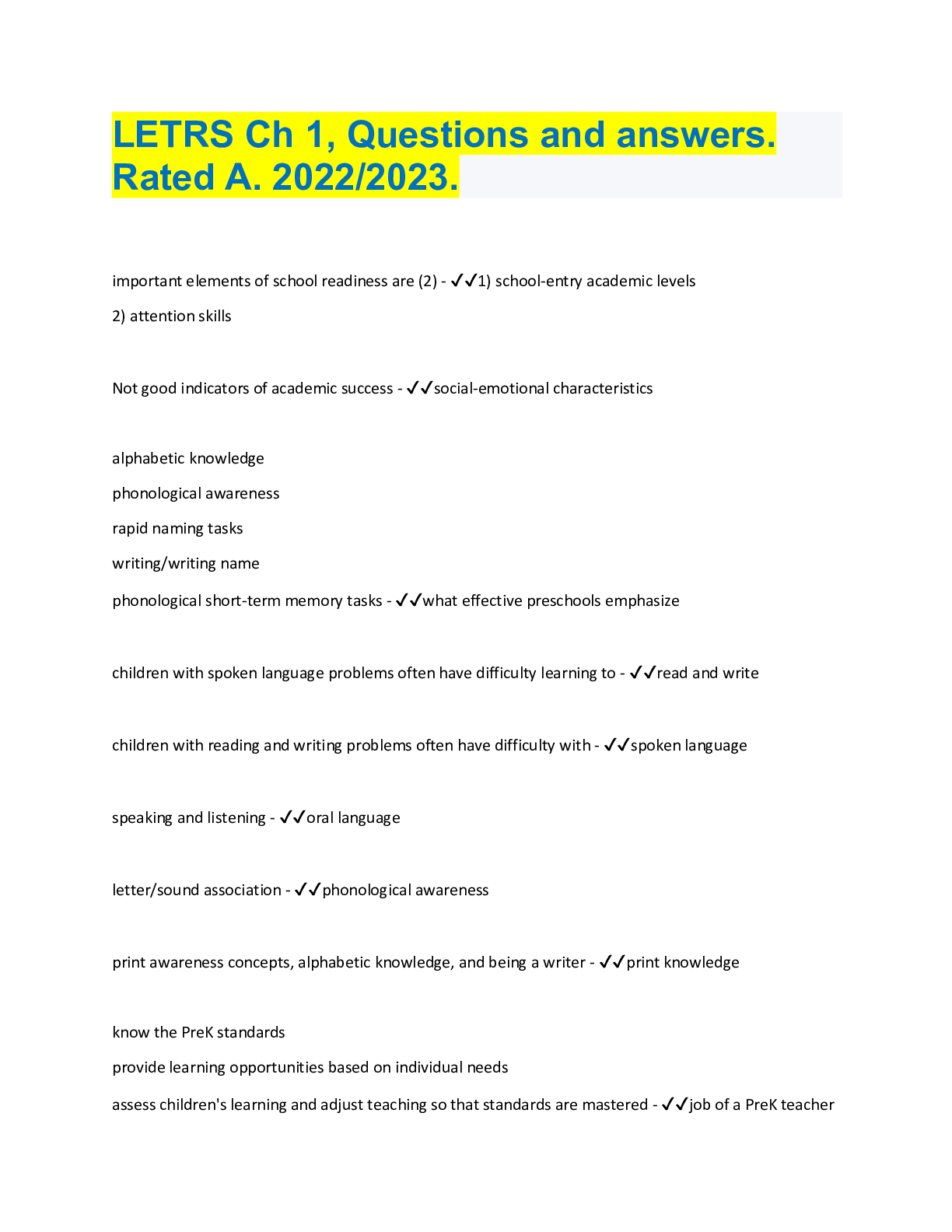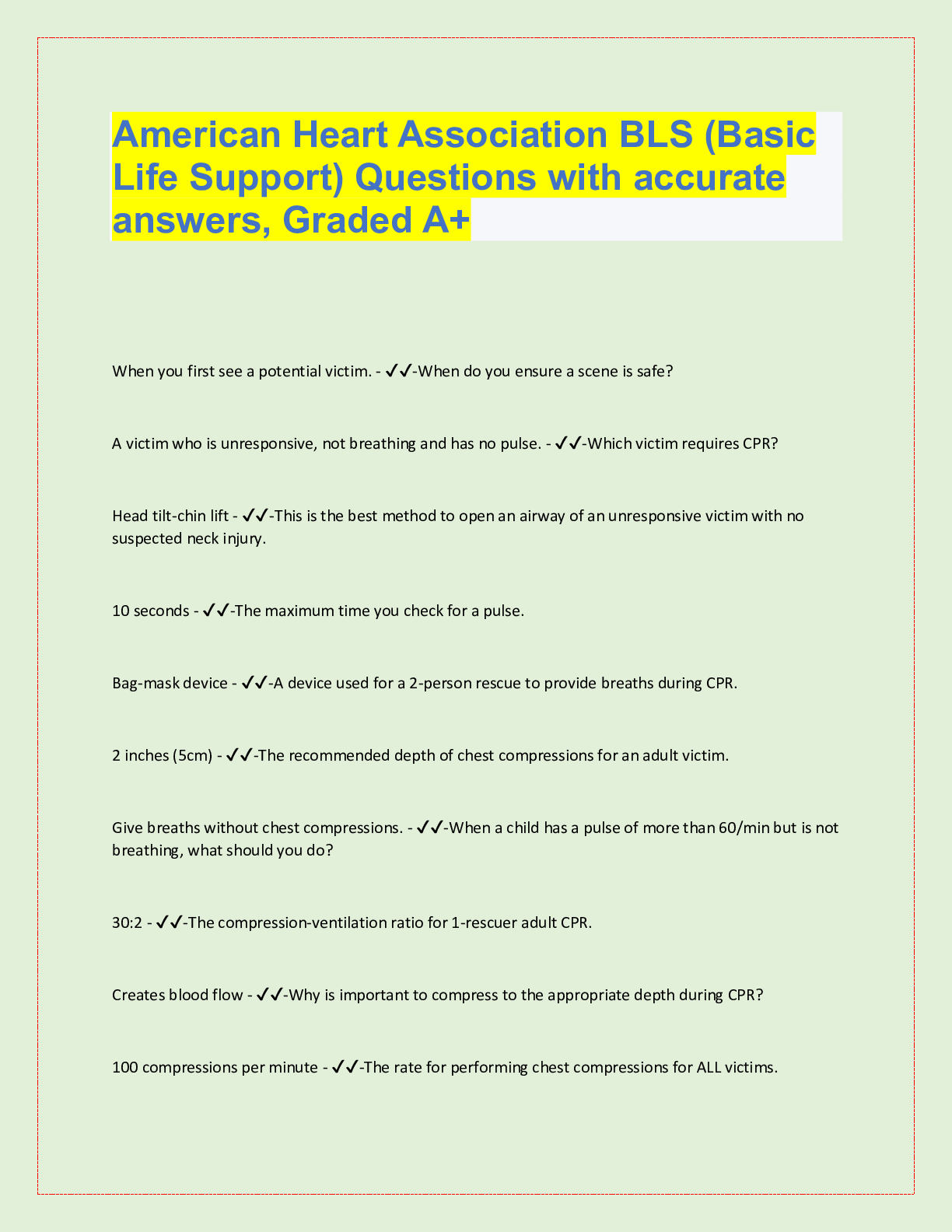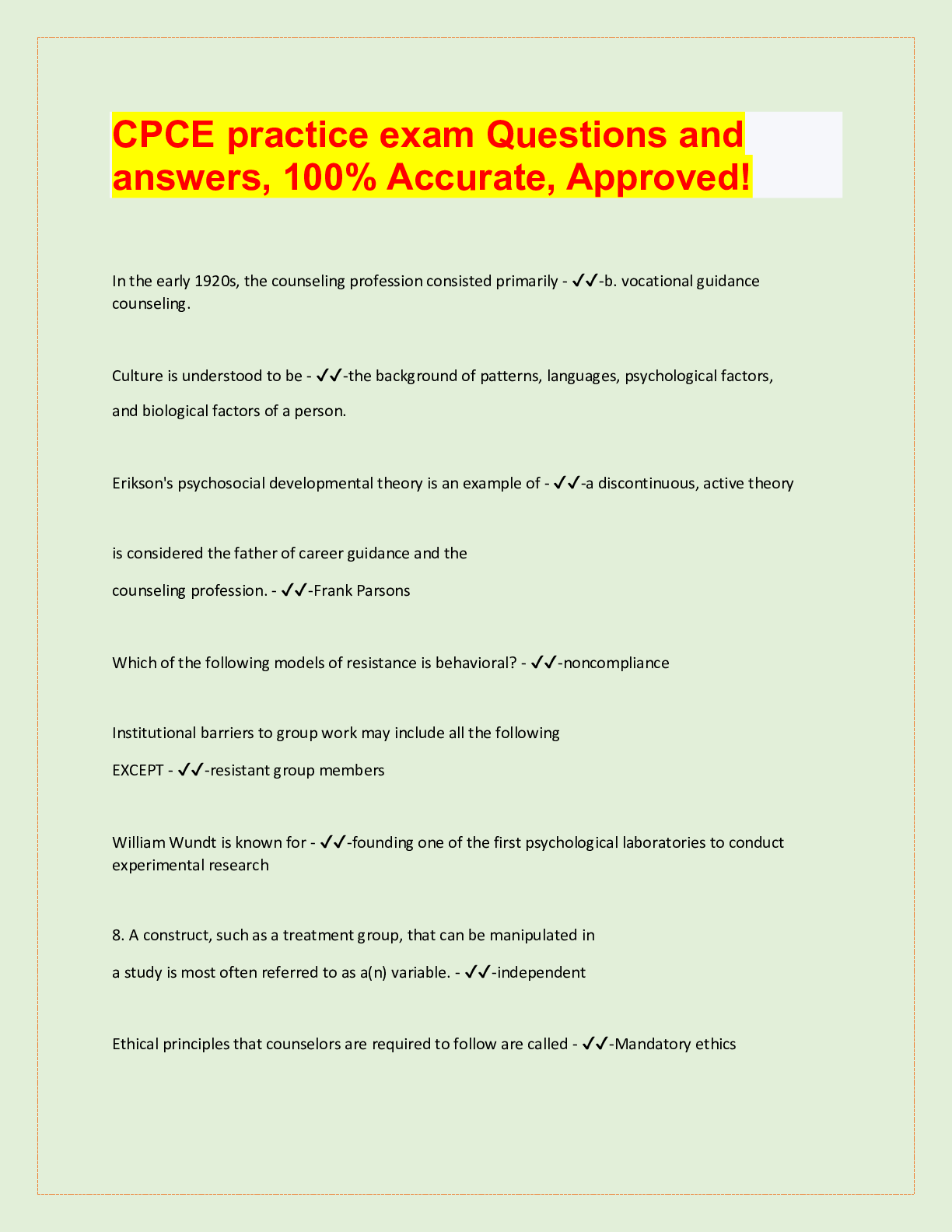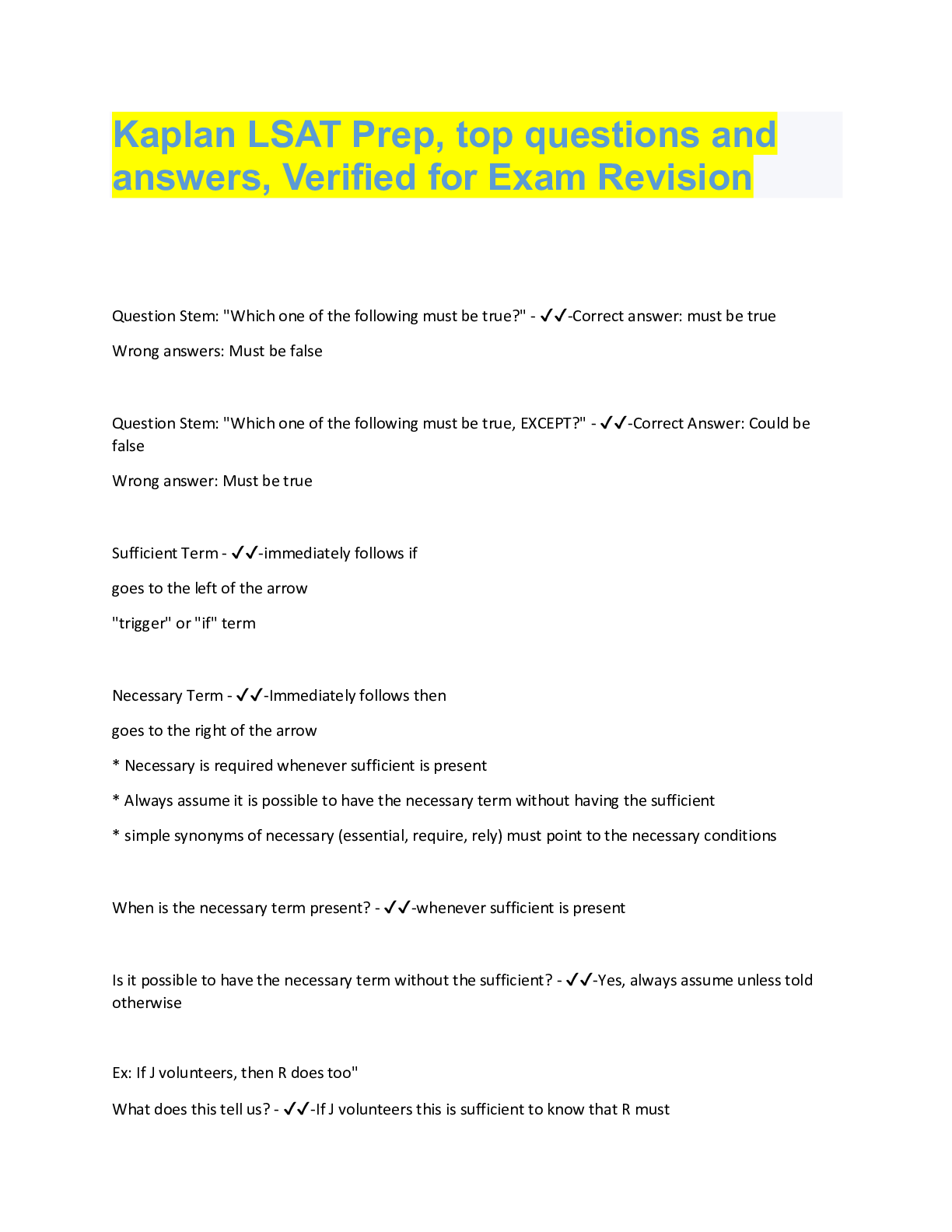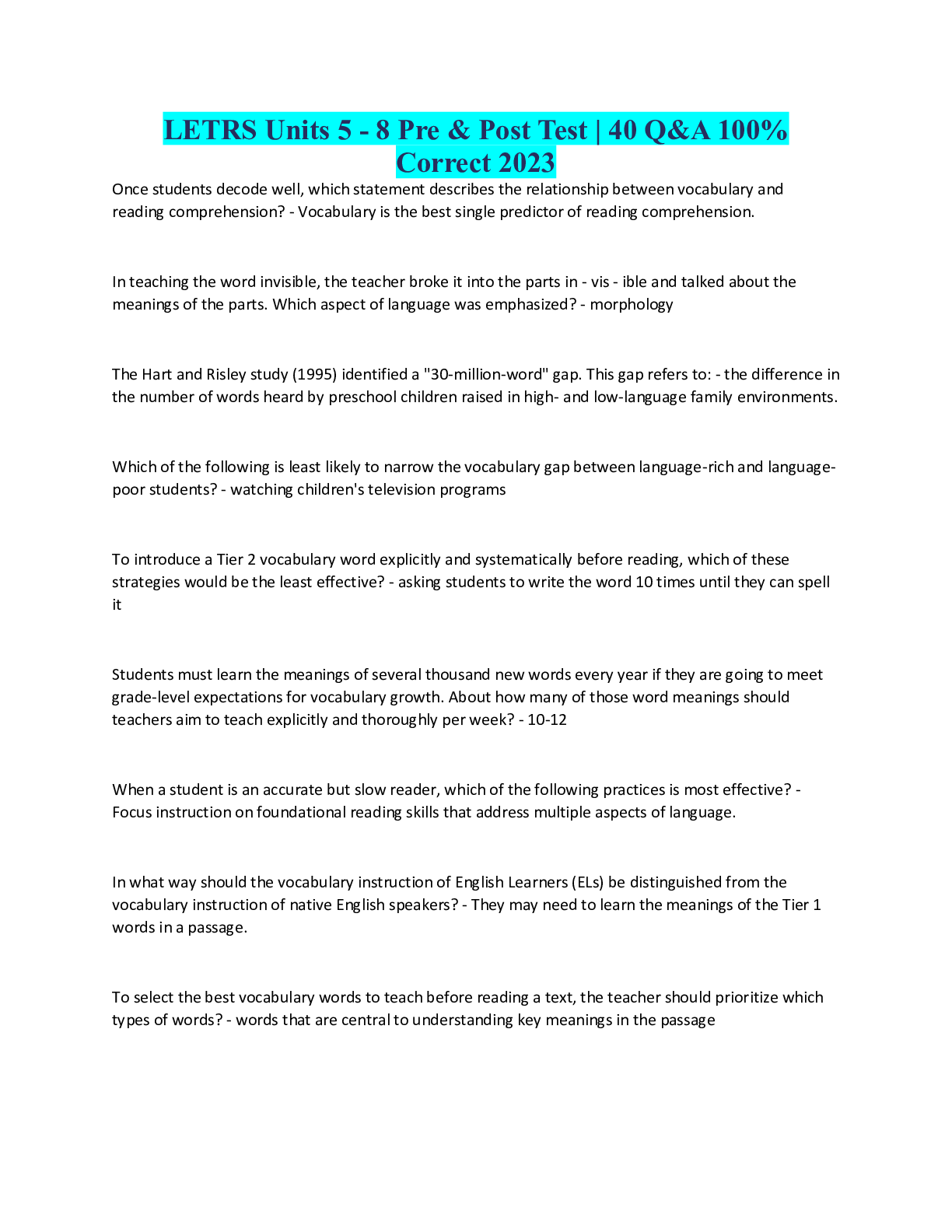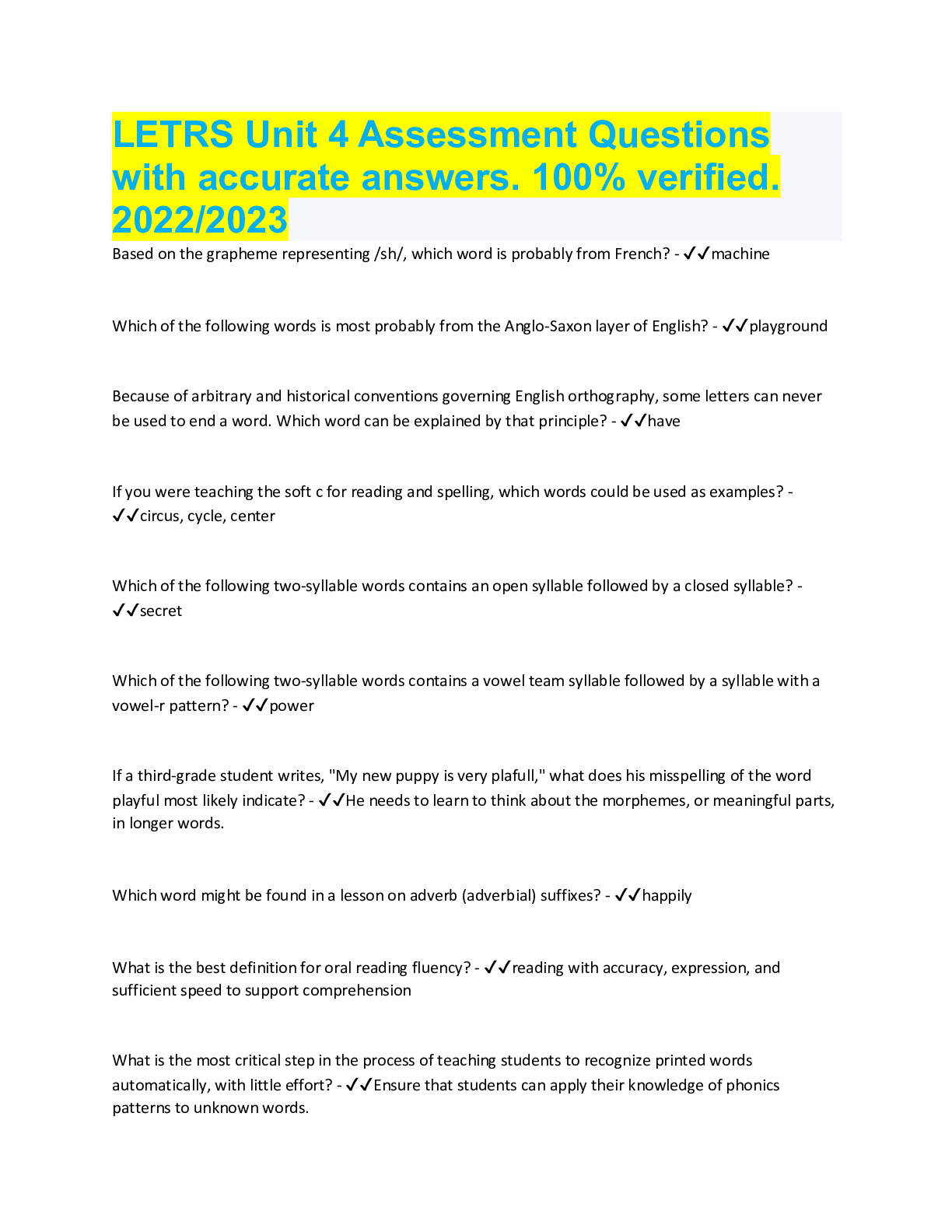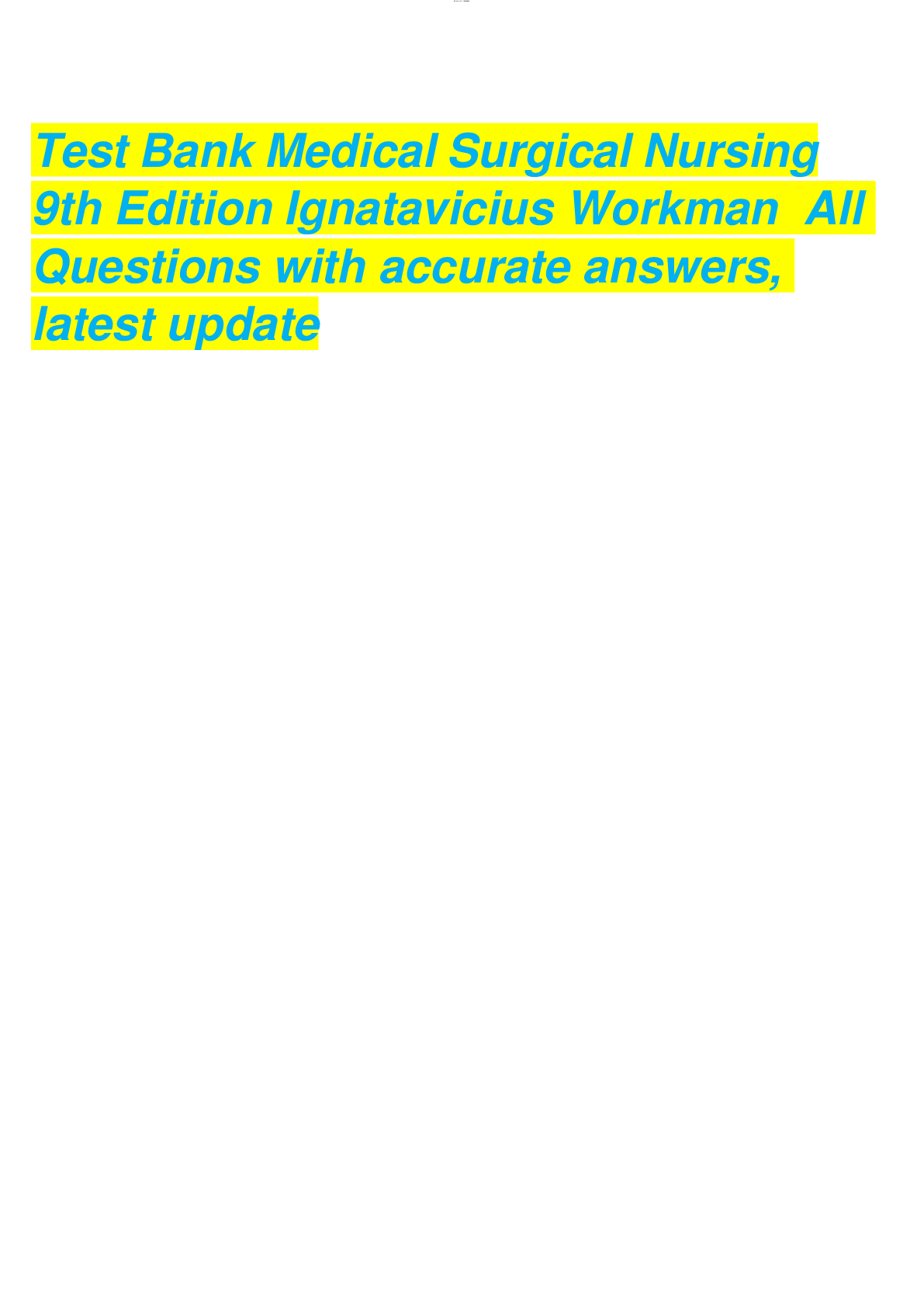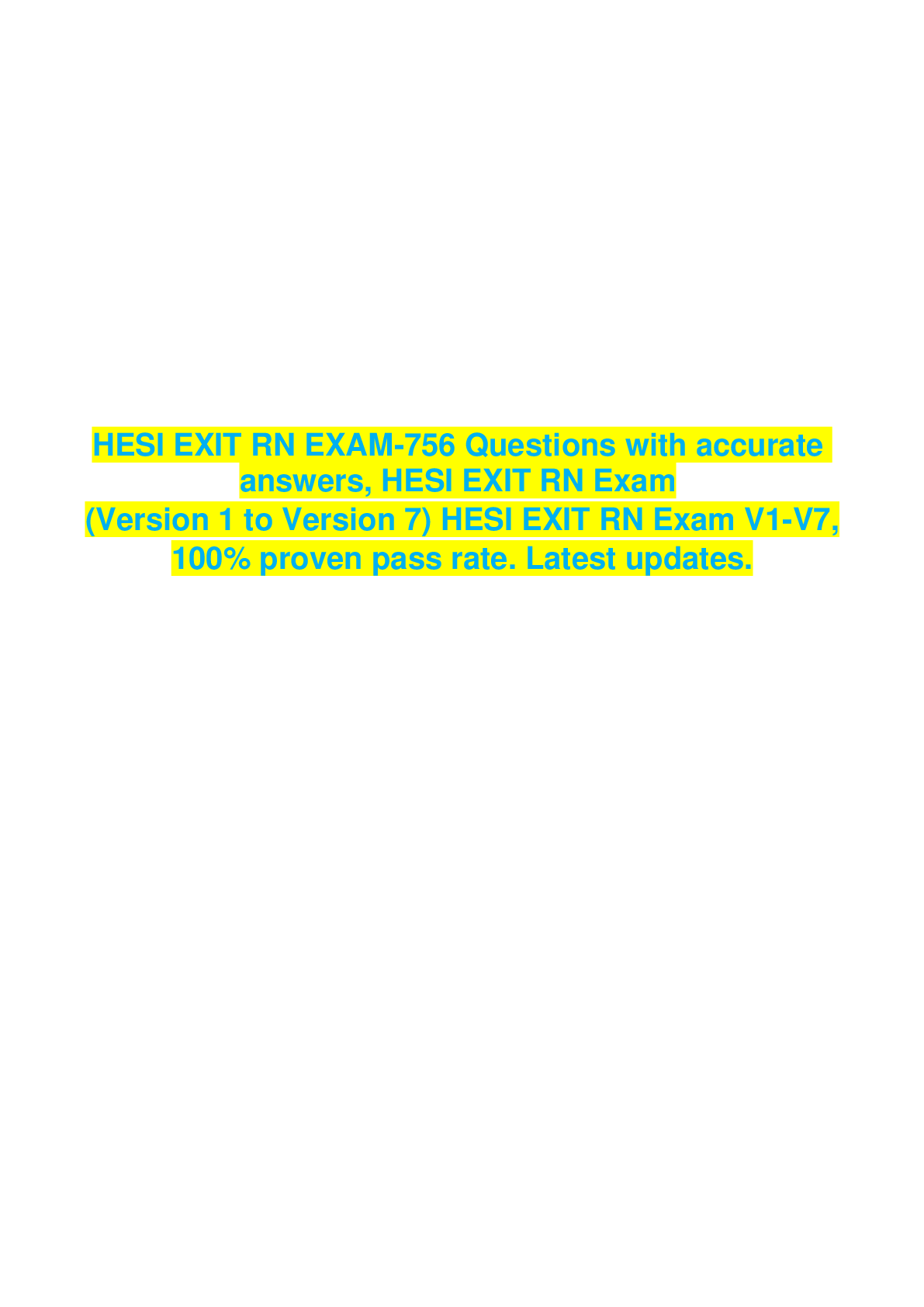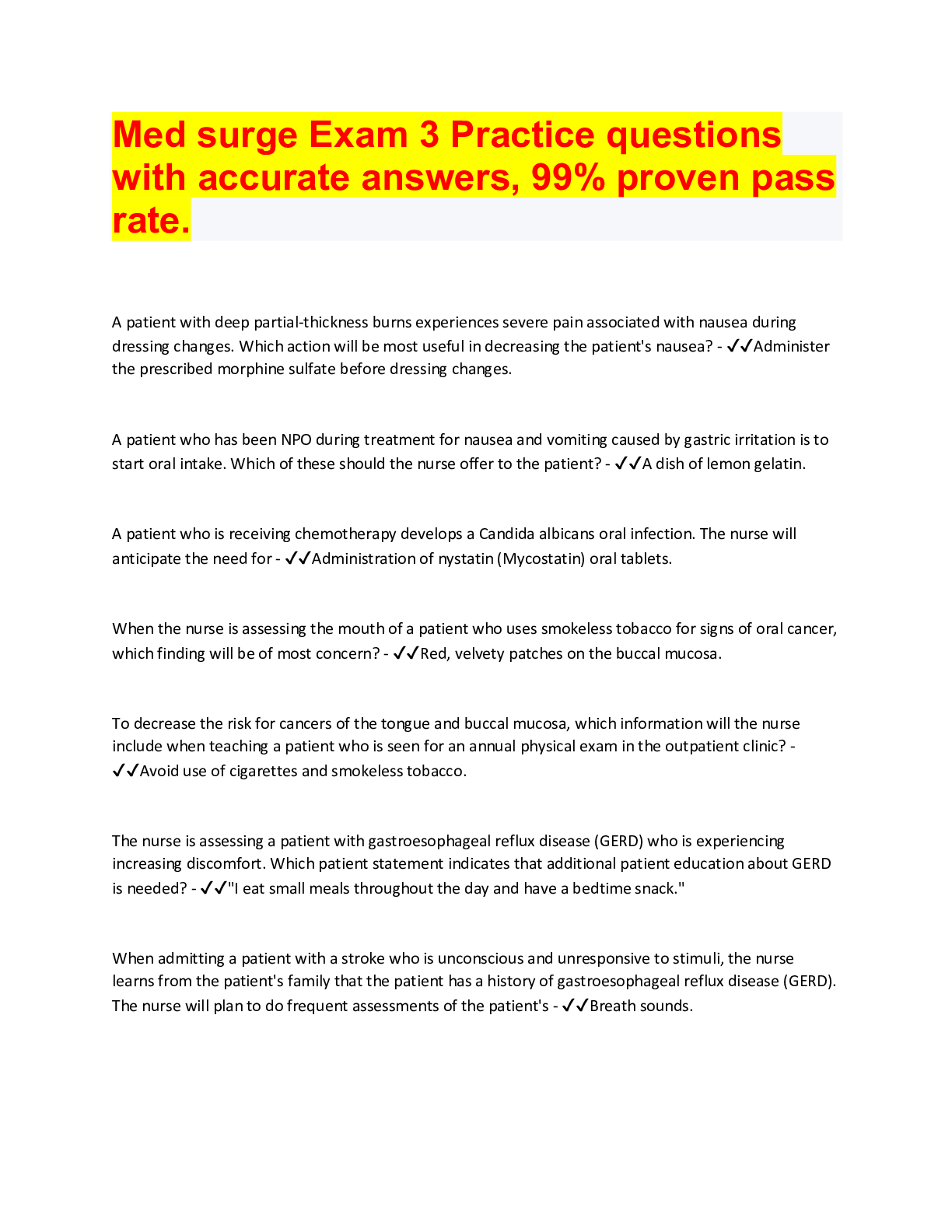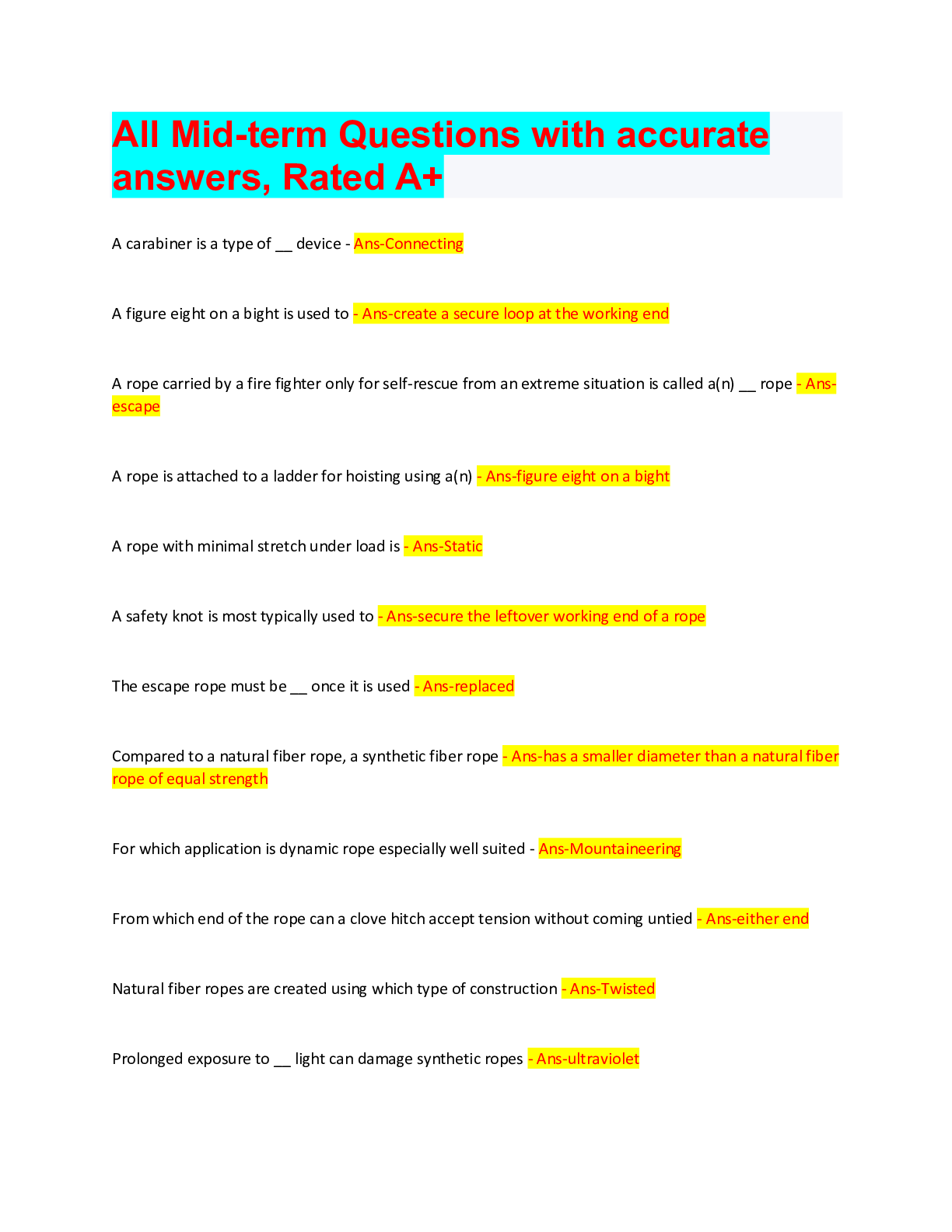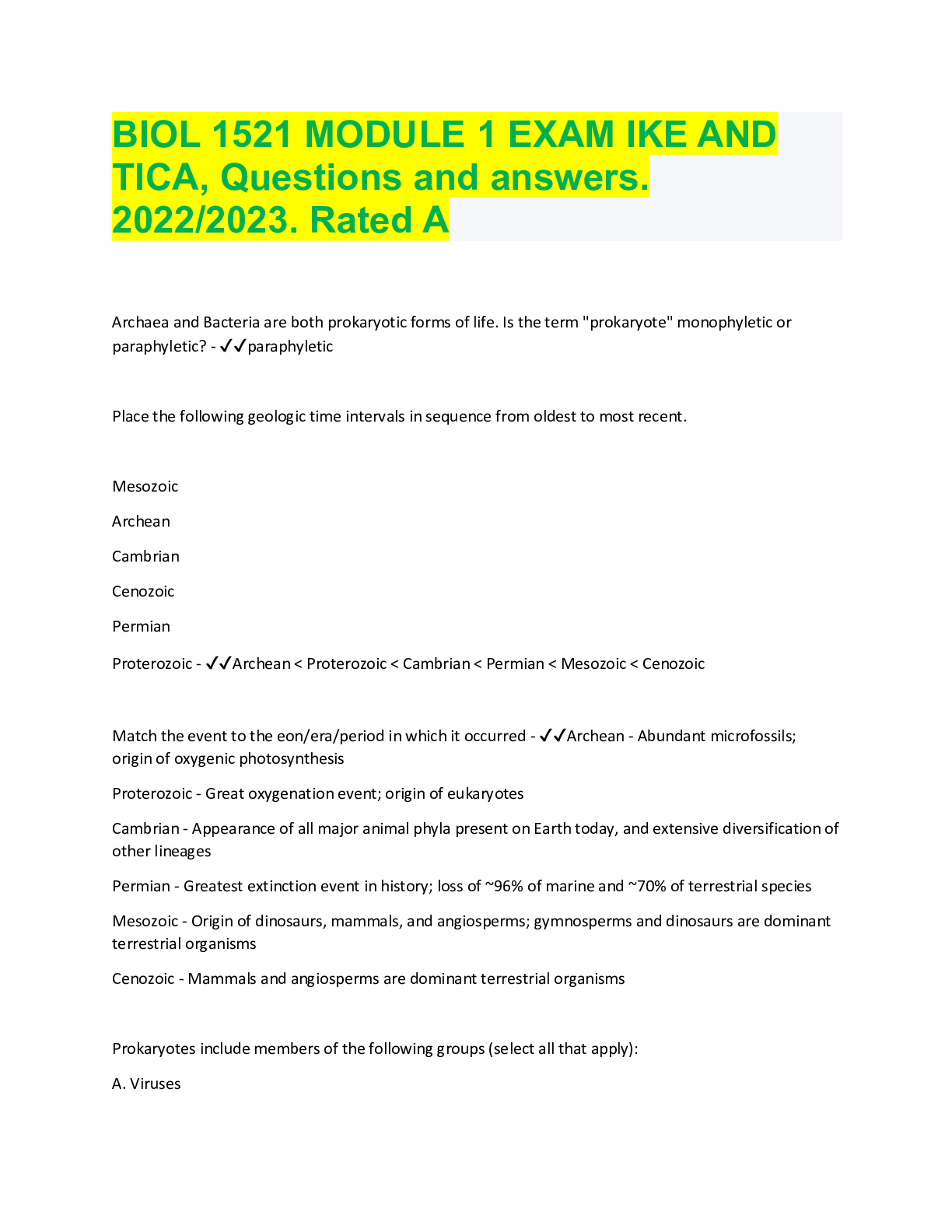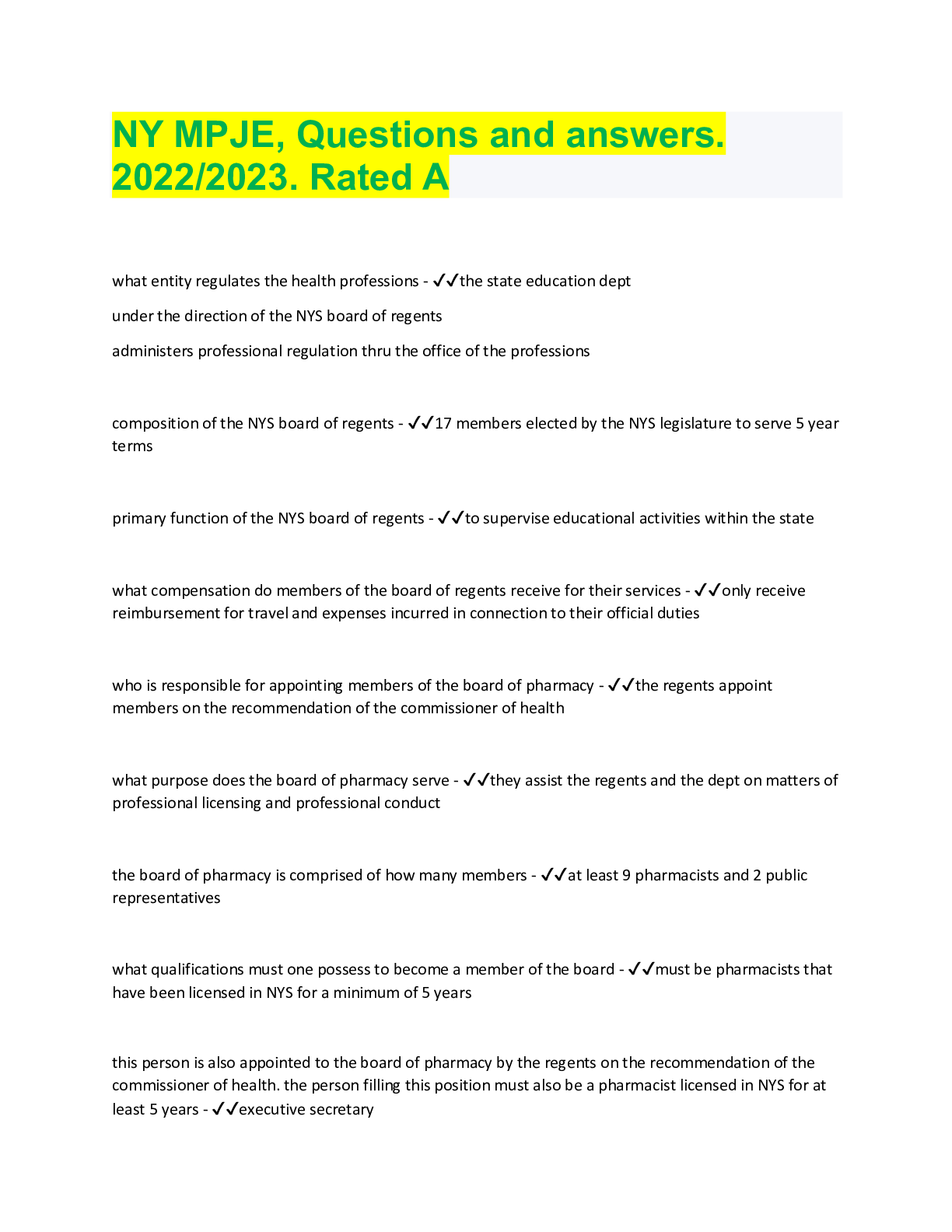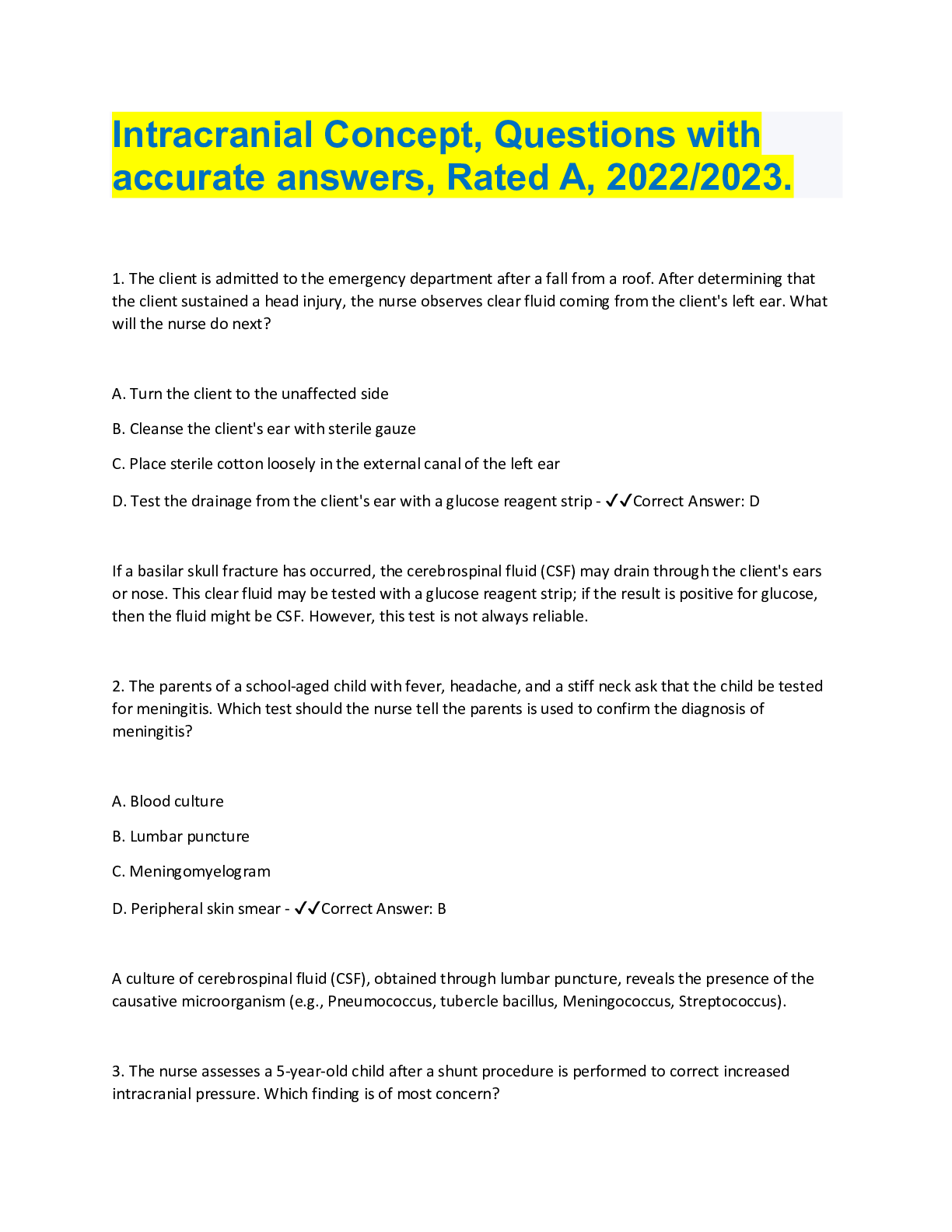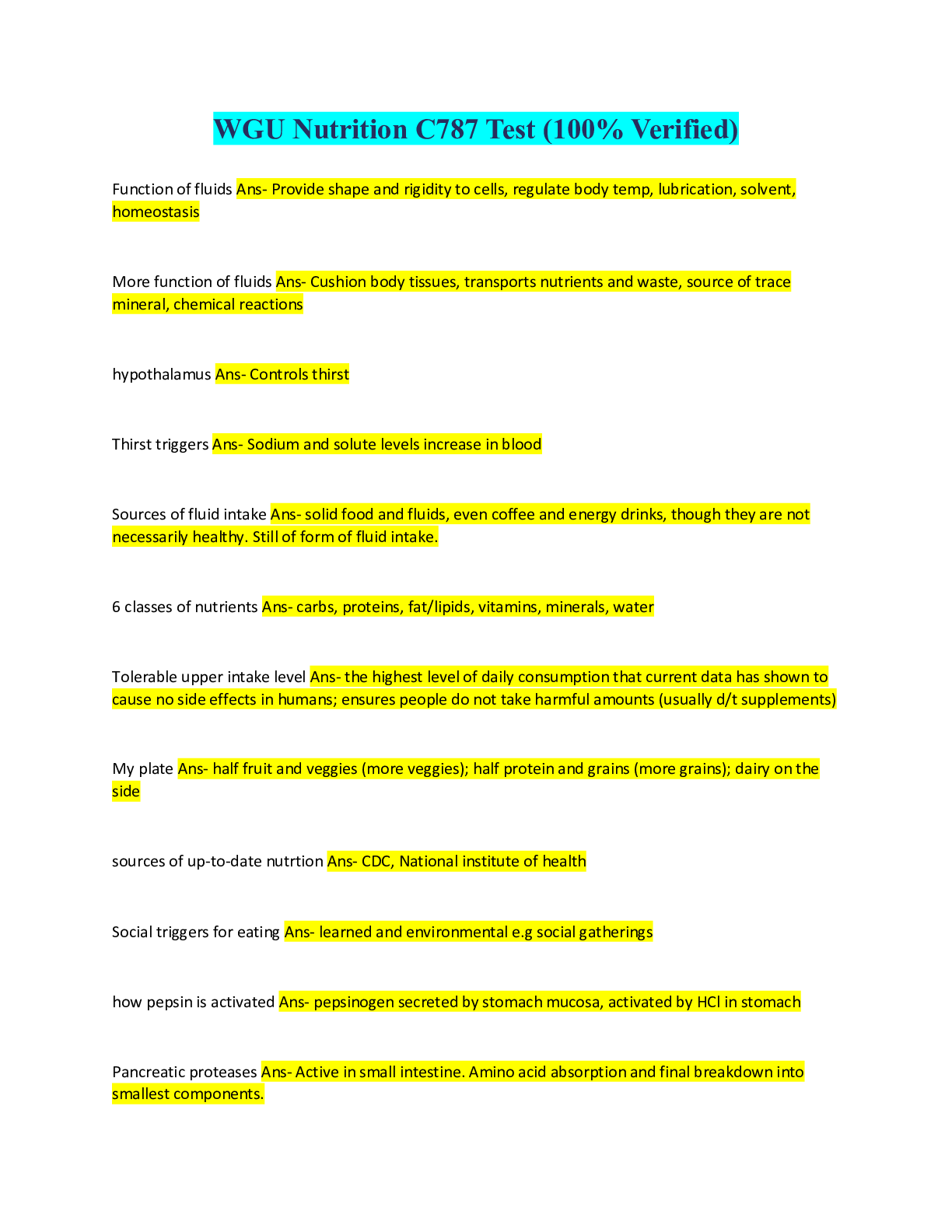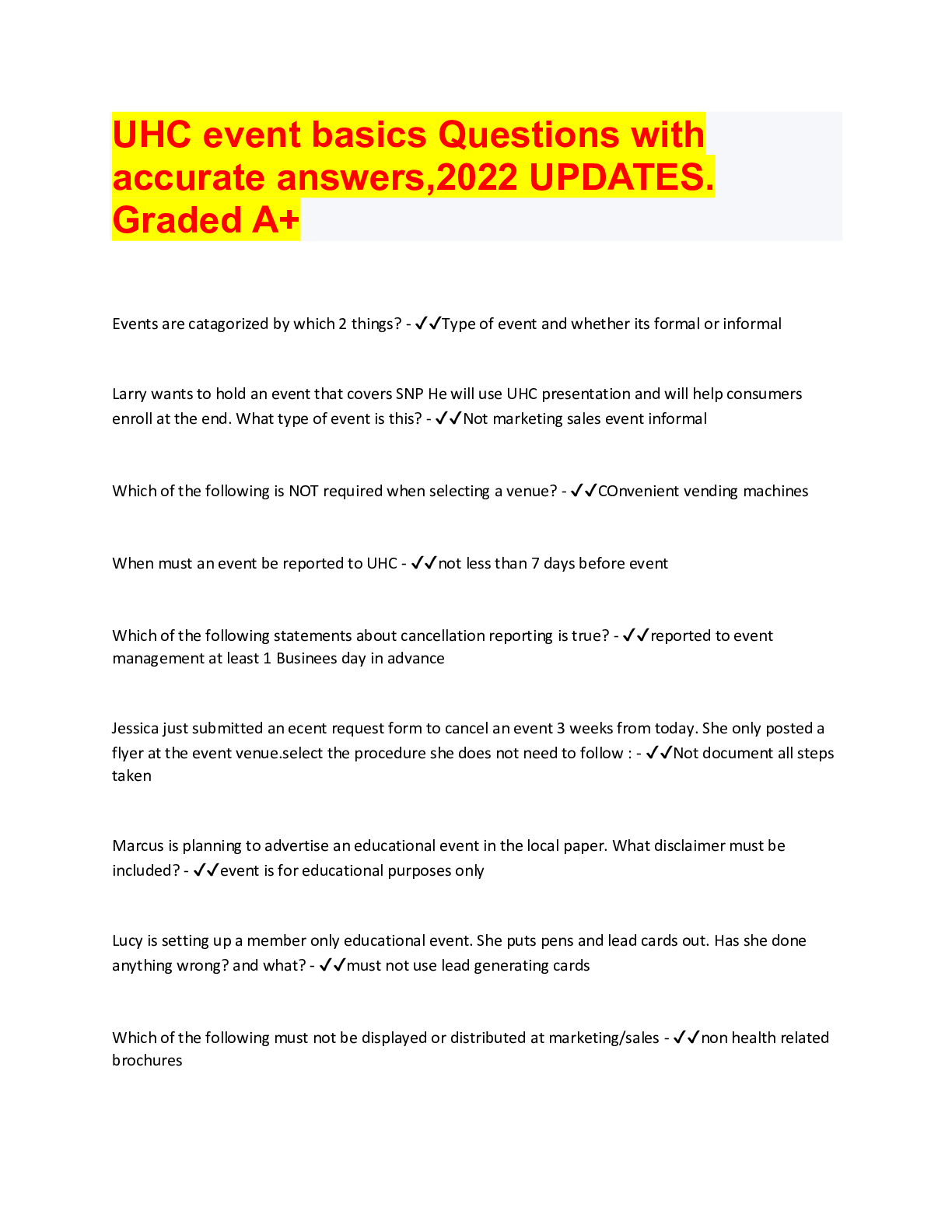*NURSING > QUESTIONS & ANSWERS > Chapter 13 JARVIS, All Questions with accurate answers, 2022/2023. Rated A (All)
Chapter 13 JARVIS, All Questions with accurate answers, 2022/2023. Rated A
Document Content and Description Below
Chapter 13 JARVIS, All Questions with accurate answers, 2022/2023. Rated A A mother brings her 2-month-old daughter in for an examination and says, "My daughter rolled over against the wall and n... ow I have noticed that she has this spot that is soft on the top of her head - ✔?ANS: "That 'soft spot' is normal, and actually allows for growth of the brain during the first year of your baby's life." The nurse notices that a patient's palpebral fissures are not symmetrical. the nurse may find that there has been damage to cranial nerve: - ✔?ANS: VII. Facial muscles are mediated by cranial nerve (CN) VII; asymmetry of palpebral fissures may be due to CN VII damage (Bell's palsy). A patient is unable to differentiate between sharp and dull stimulation to both sides of her face. The nurse suspects: - ✔?ANS: damage to the trigeminal nerve. When examining the face, the nurse is aware that the two pairs of salivary glands that are accessible to examination are the _____ glands. - ✔?ANS: parotid and submandibular A patient comes to the clinic complaining of neck and shoulder pain and is unable to turn her head. The nurse suspects damage to cranial nerve (CN) _____ and proceeds with the examination by _____. - ✔?ANS: XI; asking the patient to shrug her shoulders against resistance When examining a patient's cranial nerve (CN) function, the nurse remembers that the muscles in the neck that are innervated by CN XI are the: - ✔?ANS: sternomastoid and trapezius. A patient's laboratory data reveal an elevated thyroxine level. The nurse would proceed with an examination of the _____ gland. - ✔?ANS: thyroid The thyroid gland is a highly vascular endocrine gland that secretes thyroxine (T4) and tri-iodothyronine (T3). A patient says that she has recently noticed a lump in the front of her neck below her "Adam's apple" that seems to be getting bigger. During the assessment, the finding that leads the nurse to suspect that this may not be a cancerous thyroid nodule is that the lump (nodule): - ✔?ANS: is mobile and not hard. A mother brings her newborn in for an assessment and asks, "Is there something wrong with my baby? His head seems so big." The nurse recognizes that - ✔?ANS: Head circumference should be greater than chest circumference at birth. A patient, an 85-year-old woman, is complaining about the fact that the bones in her face have become more noticeable. What explanation? - ✔?ANS: It is probably due to a combination of factors related to aging, such as decreased elasticity, subcutaneous fat, and moisture in her skin. A patient presents with excruciating headache pain on one side of his head, especially around his eye, forehead, and cheek that lasts about 1/2 to 2 hours, - ✔?ANS: cluster headaches. A patient complains that while studying for an examination he began to notice a severe headache in the frontotemporal area of his head that is throbbing and is somewhat relieved when he lies down. - ✔?ANS: migraine headaches. Migraine headaches tend to be supraorbital, retro-orbital, or frontotemporal with a throbbing quality. They are of a severe quality and are relieved by lying down. Migraines are associated with family history of migraines. A 19-year-old college student is brought to the emergency department with a severe headache, His temperature is 104° F, and he has a stiff neck. - ✔?ANS: Meningeal inflammation . During a well-baby check, the nurse notices that a 1-week-old infant's face looks small compared with his cranium, which seems enlarged. On further examination, the nurse also notices dilated scalp veins and downcast, or "setting sun," eyes. The nurse suspects which condition? - ✔?ANS: Hydrocephalus The nurse needs to palpate the temporomandibular joint for crepitation. This joint is located just below the temporal artery and anterior to the: - ✔?ANS: tragus. The temporomandibular joint is just below the temporal artery and anterior to the tragus. A male patient with a history of AIDS has come in for an examination and he states, "I think that I have the mumps." The nurse would begin by examining the: - ✔?ANS: parotid gland. The parotid gland may become swollen with the onset of mumps, and parotid enlargement has been found with HIV. The nurse suspects that a patient has hyperthyroidism and laboratory data indicate that the patient's thyroxine and tri-iodothyronine hormone levels are elevated. Which of these findings would the nurse most likely find on examination? - ✔?ANS: Tachycardia A visitor from Poland who does not speak English seems to be somewhat apprehensive about the nurse examining his neck. He would probably be most comfortable with the nurse examining his thyroid from: - ✔?ANS: the front with the nurse's thumbs placed on either side of his trachea and his head tilted forward. A patient's thyroid is enlarged, and the nurse is preparing to auscultate the thyroid for the presence of a bruit. A bruit is a __________ of the stethoscope. - ✔?ANS: soft, whooshing, pulsatile sound best heard with the bell The nurse notices that an infant has a large, soft lump on the side of his head and that his mother is very concerned. She tells the nurse that she noticed the lump about 8 hours after her baby's birth, and that it seems to be getting bigger. One possible explanation for this is: - ✔?ANS: cephalhematoma. A mother brings in her newborn infant for an assessment and tells the nurse that she has noticed that whenever her newborn's head is turned to the right side, she straightens out the arm and leg on the same side and flexes the opposite arm and leg. After finding this on examination, the nurse would tell her that this is: - ✔?ANS: normal and should disappear between 3 and 4 months of age. The tonic neck reflex disappears between 3 and 4 months of age. During an examination, the nurse knows that Paget's disease would be indicated by which of these assessment findings? - ✔?ANS: Headache, vertigo, tinnitus, and deafness During an admission assessment, the nurse notices that a male patient has an enlarged and rather thick skull. The nurse suspects acromegaly and would further assess for: - ✔?ANS: coarse facial features. Acromegaly is excessive secretion of growth hormone that creates an enlarged skull and thickened cranial bones. with hyperthyroidism. When examining children affected with Down syndrome (trisomy 21), the nurse looks for the possible presence of: - ✔?ANS: ear dysplasia. A patient visits the clinic because he has recently noticed that the left side of his mouth is paralyzed. He states that he cannot raise his eyebrow or whistle. The nurse suspects that he has: - ✔?ANS: had a cerebrovascular accident (stroke). [Show More]
Last updated: 1 year ago
Preview 1 out of 4 pages

Reviews( 0 )
Document information
Connected school, study & course
About the document
Uploaded On
Sep 24, 2022
Number of pages
4
Written in
Additional information
This document has been written for:
Uploaded
Sep 24, 2022
Downloads
0
Views
69


